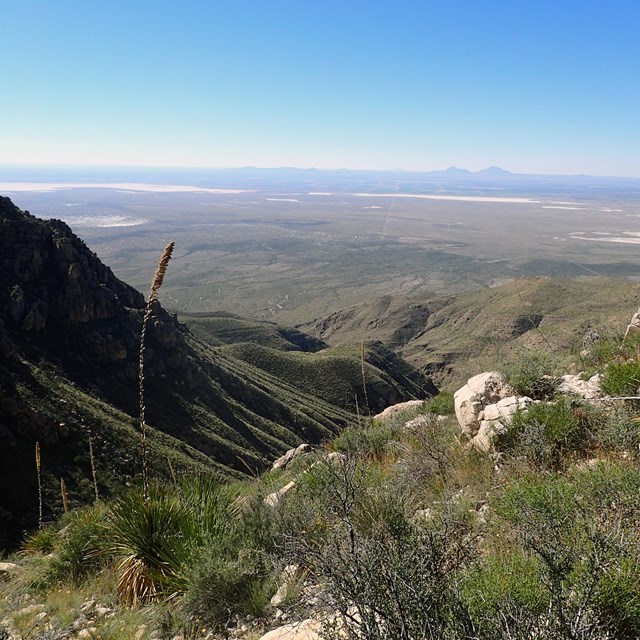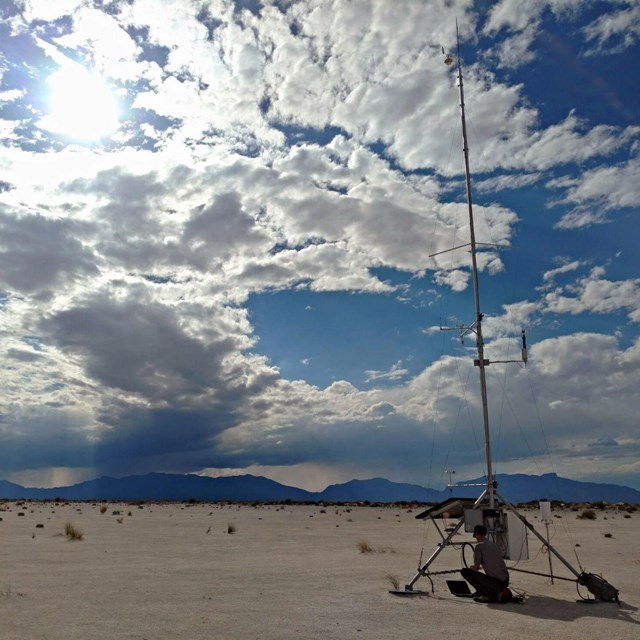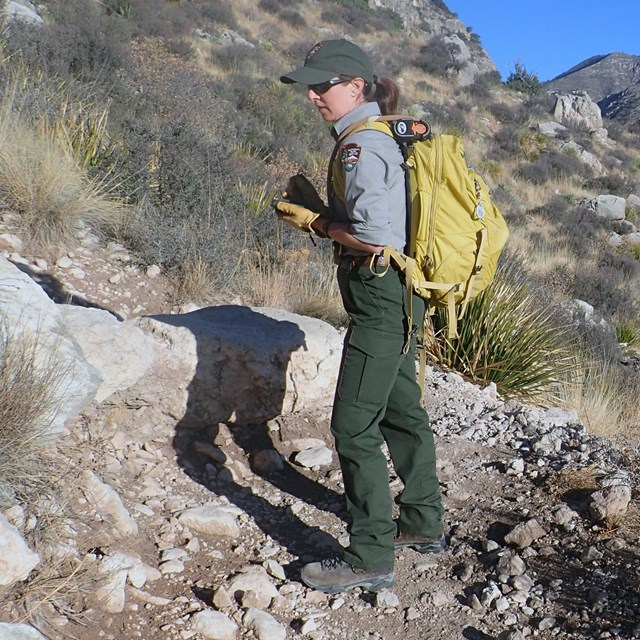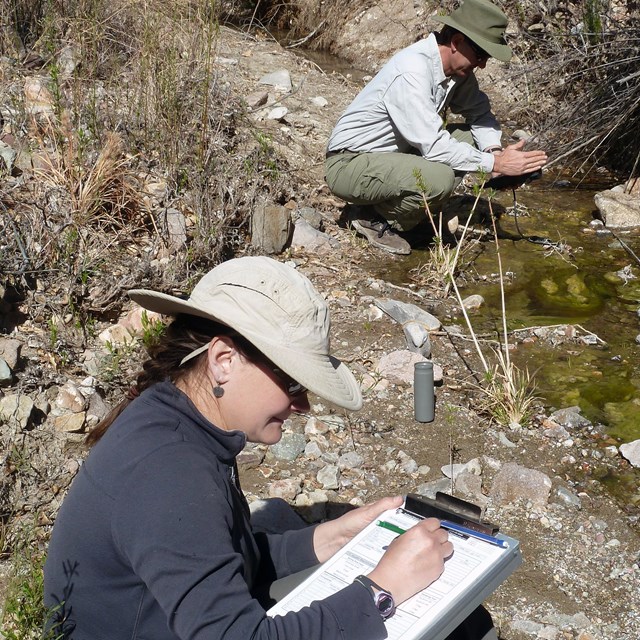Park monitoring provides information about changes or trends in natural resources and is essential for managing parks "unimpaired for future generations." We track specific physical, chemical, and biological elements, or "vital signs," that represent the condition of park ecosystems or the effects of stressors to those ecosystems. This long-term monitoring involves following scientific protocols to take repeated measurements of natural resource vital signs over time.
The Vital Signs Monitoring Plan for the Chihuahuan Desert Network provides a detailed description of how we chose vital signs, and the strategy for implementing our monitoring program. Click on a vital sign below to learn more.
Vital Signs
-
 Air Quality
Air QualityWe monitor visibility and particulate matter, ozone, and atmospheric deposition.
-
 Climate
ClimateWe monitor temperature, precipitation, and potential evapotranspiration.
-
 Dune Dynamics
Dune DynamicsWe monitor dune formation, stability, and morphology (dune shape).
-
 Groundwater
GroundwaterWe monitor long-term changes in groundwater levels.
-
 Invasive Exotic Plants
Invasive Exotic PlantsWe monitor for new invasive, exotic plants and changes in existing exotic plant populations.
-
 Landbirds
LandbirdsWe monitor bird species richness and community composition, as well as density and distribution of common birds.
-
 River Channel Characteristics
River Channel CharacteristicsWe monitor the Rio Grande River channel area and shape and how these change over time.
-
 Seeps, Springs, and Tinajas
Seeps, Springs, and TinajasWe monitor seep, spring, and tinaja water quality and quantity, and riparian vegetation.
-
 Terrestrial Vegetation and Soils
Terrestrial Vegetation and SoilsWe monitor plant community composition, soil characteristics, and biological soil crusts.
Last updated: August 29, 2018
